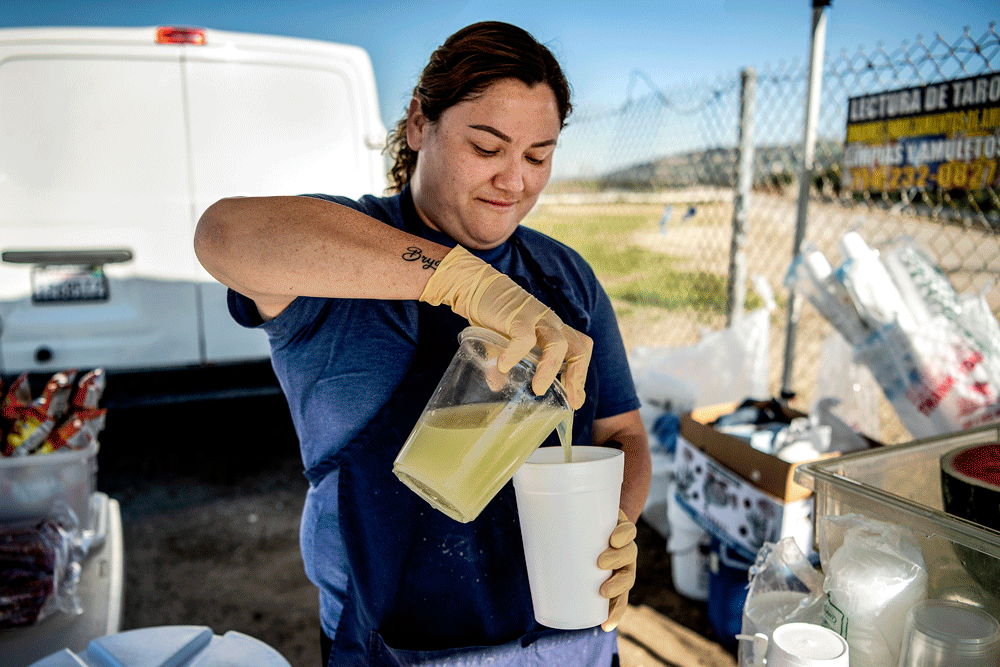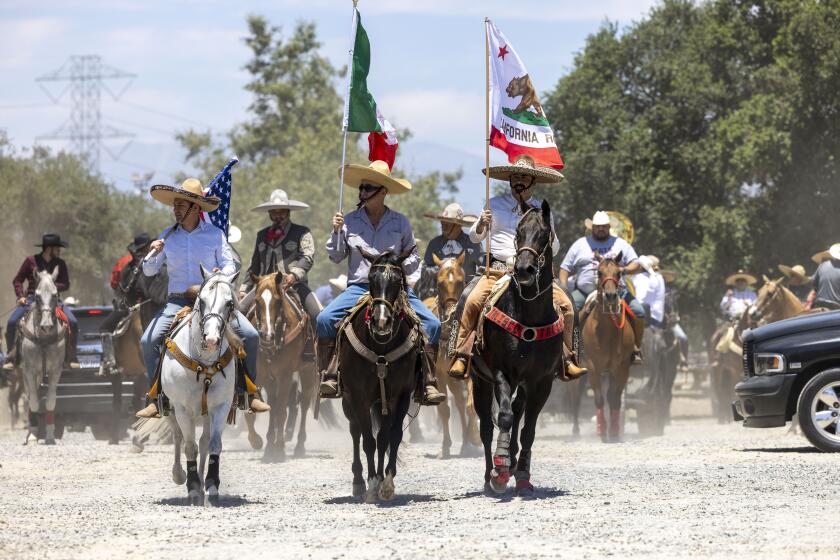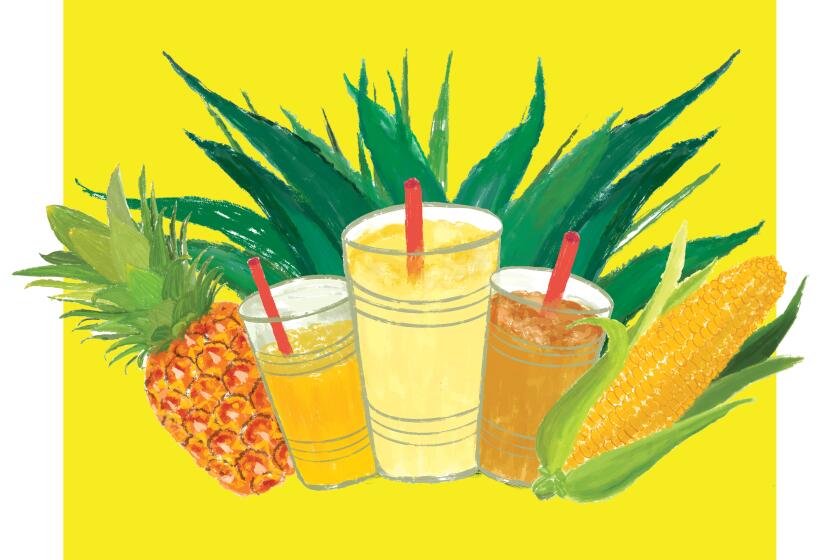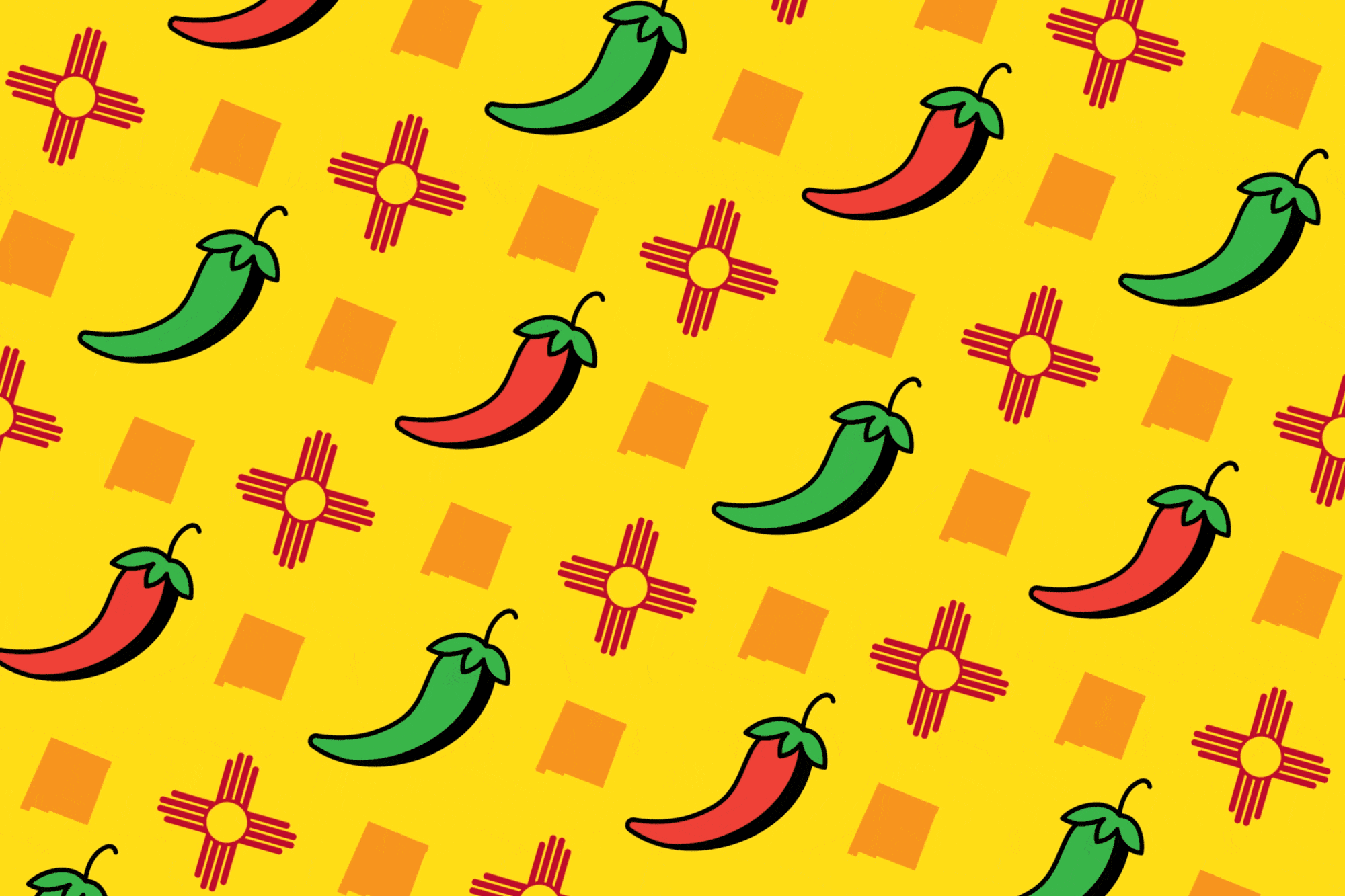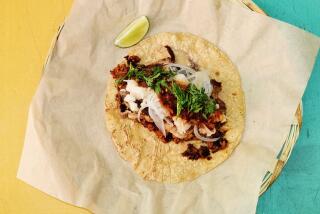
- Share via
- In covert gatherings across California, raw goat or cow milk is mixed with cane alcohol and sugars to make pajaretes. The drink is an early-morning tradition from western Mexico.
- Despite health risks, raw milk consumption in the United States is rising, especially with advocates like new health secretary Robert F. Kennedy Jr.
- Some experts say the high-proof alcohol may counteract pathogens, but would not sterilize the milk.
- The culture blends old-fashioned American freedom with Mexican rural culture, a form of “rancho libertarianism.” Not everyone in agricultural areas supports the practice.
The goat had a resigned look in her eyes as the rancher pressed her udder and aimed a stream of milk into a tall cup. Sunrise needled through the misty air. The smell of manure was almost tactile. A foam emerged as the shooting milk churned with a powdery mixture at the cup’s bottom: instant coffee, granulated sugar, cinnamon and a hefty shot of alcohol de caña, an imported cane liquor that is nearly pure alcohol. The froth reached the top of the cup, creating a crown of tan bubbles.
This is how you make a pajarete, a rustic drink from western Mexico. The term comes from the root pájaro, or bird, which is to say, according to ranchers, it gives you a lift. The pajarate (pah-HA-re-teh) is offered like this on early mornings in various agricultural pockets of Southern California. The practice is covert, unlicensed and unregulated, one of those “if you know, you know” social rituals that are common behind closed doors across the state.
In the backyard of a house with livestock pens, Louie Rodriguez, a 44-year-old resident of Ontario, reached over and took his pajarete from the rancher. It was just after 7 a.m., a bit late — spiked goat’s milk is best drunk at the crack of dawn. Rodriguez beamed.
His father first brought him to try the drink at this ranch in Muscoy, an unincorporated semirural community of San Bernardino County where keeping livestock in private homes is legal. Since then, he’s been coming whenever he can, a pajarete convert.
“It tastes like a latte,” Rodriguez said after the morning’s first sip. “A boozy latte.”


From udder to cup
Drinking unpasteurized milk is an old custom in dairy-producing regions of Mexico, especially in the state of Jalisco. Ranchers there refer to fresh milk on its own as leche bronca, or “wild milk.” When spiked with alcohol de caña or tequila, the pajarete is associated with promoting vitality and good health. Some ranchers use it as a basic breakfast before a day on the land.
Along the way, ranchers began adding flavors to their morning milk. Nescafé, crumbled marzipan, cinnamon and powdered chocolate became common. Cane liquor that is produced regionally in Mexico — notoriously high-proof and dirt cheap — is supposed to kill any bad viruses that might be present.
Conveniently, it also gets you drunk.
The custom is a mostly grandfatherly affair, largely male, though some women and families participate. In some cases, pajarete locations morph into full-blown daytime parties, with live banda music, taqueros, beers and other alcohols. Younger drinkers might still be partying from the night before. Unknown numbers of ranch homes in the region offer fresh goat or cow milk like this, from before dawn till the animals tap out (usually by 8 a.m., sometimes earlier).

Health inspectors occasionally issue administrative citations, or law enforcement is drawn due to neighbor complaints, according to records and interviews. But people still gather and the pajaretes flow, from goat udder to cup.
Even with reports of the bird flu virus detected in commercialized raw cow’s milk in California, no such fears have reached the pajarete lovers of Muscoy, where milk is not collected or processed for sale — it’s drunk on the spot. Popular locations spread mostly by word of mouth or social media. Influencers are also glomming onto the trend.

In addition to Muscoy, clandestine pajaretes can be found in almost any community where residents can keep horses, cattle or other livestock on their properties for personal use. The designation is surprisingly common in Los Angeles and the Inland Empire, clustered in areas that exist under webs of agricultural or equestrian zones: East Compton, Jurupa Valley, Perris, Avocado Heights, Sylmar, Chino, Santa Clarita and many more. Most have uniquely layered codes that locals insist give them sufficient gray areas in which to operate.
These areas have also become more Mexicanized in recent decades, pushed by immigrants who’ve worked successfully to build homes and families in Los Angeles. Many naturalized immigrants still long for hints of the motherland back in states like Jalisco, Michoacán, Zacatecas or Sinaloa. Pajarete culture is springing up and down the state too: in Bakersfield, Fresno and Sacramento, plus south of the border in Baja California, around Tijuana and Rosarito.

“It’s good for your health,” said goat owner Victor, 44, while milking one recent morning. He preferred to be identified by first name only, to avoid the attention of authorities.
Victor grew up drinking milk directly from cows back in Jalisco. He eventually migrated, worked various jobs and settled in Muscoy. “Everyone who grew up in Jalisco knows about this. We keep the customs from over there,” Victor said. “This isn’t a business. It’s just about spending time together, as friends, people we know.”
Even so, the Muscoy rancher admitted his fresh milk is not free. A typical pajarete runs about $10, to help maintain and care for the animals. In some locations, signs may indicate “No alcohol for sale” — as in, a guest can make a pajarete mixture with anything laid out on the table. If that includes some liquor laying about, it’s on you.
Tepache, tejuino and pulque are rustic beverages with Indigenous roots, yet they’re still barely known north of the border.
Giovanni Dominguez, who lives in Fontana, noted that every pajarete serving is customizable. “It depends on how you make it, stronger or lighter. You have to keep coming here to get that right mix,” Dominguez said, adding that his father used to take him for fresh milk in Chino when he was growing up.
“I throw in 1 ½ scoops of the chocolate, half a spoon of the Nescafé, and up to about right here of alcohol,” he said, pointing near the bottom of his cup.
“If you go too hard, you’re going to f— your day up. And if you drink two of them, you’re f—,” Dominguez said. “You’re gonna have to go to the restroom.”

Construction worker Juan Ortiz, 24, said he felt connected to pajarete culture because his father is from Jalisco. He visited a separate Muscoy location with his small daughter, who was bundled up in multiple jackets and clearly having a blast as she watched loose kids — as in, goat kids — kicking in the air with asymmetrical exuberance.
“I heard about it from an old-timer here in Muscoy,” Ortiz said. “I started doing it on my own, every other day. I think if you over-put alcohol, it doesn’t taste good.”
Asked about critics who might say that raw milk consumption poses a health risk to him or his child, Ortiz said he disagreed. “It’s natural, you’re watching it. It’s 100% real,” he said. “It’s not from the store where they add … I don’t know what they add.”

Does the alcohol help?
The U.S. Food and Drug Administration and most dairy scientists in both Mexico and the United States say that drinking unpasteurized milk exposes consumers to significant risk of infection from listeria, salmonella and E. coli among other pathogens that can get humans seriously sick. That’s why pasteurization was invented, experts note, because so many people were getting sick or dying from drinking milk.
Yet the topic is still controversial. Skepticism of academia and the healthcare industry is reaching new peaks, making pasteurization suspicious to more people on both the left and the right, from wealthy elites steeped in coastal wellness culture to legions of Donald Trump supporters. Though most claims about raw milk’s benefits are debunked or unproven, the president’s new Health and Human Services secretary, Robert F. Kennedy Jr., a longtime raw milk drinker, is likely to loosen standards, experts said.

Pasteurization is an admittedly vintage food-safety practice, dating to the 1850s, said David Mills, a professor of dairy food science at UC Davis, a leading center of milk studies. Still, it remains the best available way to prevent massive infections with harmful viruses or bacteria that may be present in milk from mammals that are not human, he said. He likened pasteurization to seat belt rules — why wouldn’t you?
“There’s an erroneous belief that there are somehow ‘good bugs’ in raw milk,” Mills said. “It has proposed benefits, and they haven’t been proven. It’s really a risk-reward issue here.”
Mills, like other experts interviewed for this story, said he was unaware of the pajarete phenomenon in Southern California. Upon hearing about the custom, he said: “If you’re going to drink raw milk, the faster you can get it from the cow into your mouth is probably the safer route, if there is such a thing.”
In Mexico, pajaretes with alcohol have been linked to dozens of deaths, but not from unpasteurized milk. Tainted homemade liquor has been blamed. In a string of cases in 2020, at least 47 people across Jalisco died after drinking pajaretes with homemade cane alcohol that was tainted with too much methanol, according to local health authorities.
Despite the tragedy and media uproar, pajarete culture persists in the Mexican countryside. A first-ever national pajarete festival took place in Tlajomulco in 2023 near Guadalajara, with organizers ignoring warnings from public health officials.
The California raw milk producer who has issued several product recalls for bird flu has has applied for an advisory role at the Food and Drug Administration.

As it turns out, a shot of high-proof alcohol can in theory affect pathogens associated with raw milk, since alcohol is an antimicrobial agent, some experts said. “Generally, yes, this would go a long way to reducing microbial contamination,” said Richard Webby, a global expert in host-microbe interactions at St. Jude Children’s Research Hospital in Memphis. “Maybe that’s how it developed?”
Or think of crème liqueurs, said Linda Harris, a professor in microbial food safety at UC Davis. One study found alcohol content in crème liqueur helps keep the milk-based liquid safe to consume for extended periods, Harris said. Though warning against a conclusive analogy, she said the pajarete process would suggest a high dose of alcohol could do damage to potentially harmful pathogens — maybe.
“Bottom line, it is complicated, but you wouldn’t sterilize the milk,” Harris said, meaning getting milk to be microbe-free. “And reductions of alcohol-sensitive microbes would take time.”

In Southern California, it’s unclear when the underground pajarete scene began to coalesce, yet locals said the practice really took off during the pandemic shutdowns, when people across L.A. were desperate for clandestine social contact.
“Everyone was in their homes, and we were craving that socialization again,” said Diana Chavez, 30, a resident of Avocado Heights, an unincorporated area of the San Gabriel Valley where livestock ownership is prevalent and immigrant rancho pride is strong.
“It’s your protein shake,” Chavez said. “Some people drink this and they don’t have food until lunch. It’s very filling.”
Started by millennial activists, the Avocado Heights Vaquer@s are helping mobilize equestrian communities to fight expansion that threatens an agrarian way of life.

A jitterbug of glee
For my first pajarete, I mixed cinnamon, sugar Nescafé, and about a shot and a half of alcohol de caña into a cup before a Muscoy rancher added the goat milk straight from the doe.
At first sip, the sheer warmth of the liquid shocked me. It felt as if it had just come out of a microwave. The liquid’s proteins and fats pushed through the intense sweetness of the added sugars and instant coffee. On the other end, the 96-proof alcohol was unforgiving, coating my throat and down the hatch. I went on to visit more than a dozen pajarete locations over nearly a year in multiple communities. At each place, I identified myself as a journalist and took notes.
I’ve never gotten sick from a pajarete in the L.A. area. But it did give me an unusual buzz. The combination of fresh milk, and all its unprocessed nutrients, plus the intense alcohol produced a jitterbug of glee in my tummy that was distinct from beer or wine. Over time, I came to see how most pajarete gatherings are modest, pleasurable affairs, filled with banter with strangers, joking and camaraderie.

Still, not all locals who are aware of pajaretes in agricultural areas support their consumption. Brenay Fonseca, 32, who was born and raised in Muscoy and has “nothing but positive things to say about it,” is a proud product of semirural life in Southern California. She runs an educational farm called Rancho Los Fonseca that promotes awareness and pride in the community’s heritage.
Pajarete drinkers don’t stop and think about the practice from the animal’s perspective, Fonseca said.
Pulque, tejuino, tepache: how to tell you’re drinking the good stuff.
“I’ve had goat milk before. Goat milk is actually very healthy. But as far as getting people drunk, I’m not OK with that,” she said. “I think it’s very wrong of people to benefit off a mama’s goat milk like that. The milk belongs to the baby.”
Her farm is dedicated to helping schoolchildren understand that agriculture is central to San Bernardino’s identity. “I get asked all the time if I do pajaretes here, and I don’t do it,” she said. “Do you see that baby right there? That’s her baby. What do you think she’s going to eat?”

‘They hate everything about it’
There’s a growing curiosity in Los Angeles and the broader U.S. of ancestral ferments from Mexico. These include tepache, made of fermented pineapple rinds; tejuino, made of fermented milled corn and lime juice; tuba, of fermented palm sap; or the Korean unfiltered rice wine makgeolli.
The pajarete is not technically a ferment, but its cultural effect is similar: First- or second-generation Mexican Americans search for experiences that make them feel momentarily transported to Mexico’s romantic highlands, around horses and cattle, getting their jeans dirty.
Here, younger pajarete drinkers said, rancho “paisa” culture feels real. “It’s fun, you get faded, and you eat and drink,” Rodriguez said, explaining the appeal. “Because it’s just paisas and ranchitos, so it feels like you’re right in Mexico.”
The culture has generated its own aesthetic flairs. Connoisseurs insist on using their own personalized ceramic mug for their pajarete each time. A bolder showoff may also take a lighter and set the alcohol on fire before shooting the milk into the mug, to make a flamed pajarete.
Have you noticed? Every weekend, caravans of lowriders and custom cars are cruising and hopping in a resurgent ritual. Van Nuys Boulevard is one of the city’s oldest sites of this resilient SoCal obsession.
At one spot in unincorporated East Compton, where “Compton cowboy” culture is strong, Karla Moreno was holding her milk cup and checking out the penned goats behind oversize sunglasses. She called herself a regular.
“Despite being from Jalisco, I tasted it for the first time here,” said Moreno, who lives in South Gate. “First, I love milk, chocolate, sweet drinks. It’s a good combination with cane alcohol. And I love the buzz it gives you. It’s very different, a regular peda compared to a pajarete. It gives you a good kick.”
She added: “And then it will send you to sleep.”

Places where pajaretes are drawn seem unbowed in their way of life. In the drinking practice, the old-fashioned dogma of American freedom intersects with the do-whatever-you-please jubilance of California Mexican culture. Less rosily, the subculture also reflects the historical neglect of unincorporated communities in the region, where a kind of “rancho libertarianism” reigns. People here like to be left alone.
In Muscoy, its rise also coincides with a flourishing of street-food vending along State Street, mostly tacos, elotes, maybe pupusas. Vendors there, also facing constant inspections, said they are feeding their families and also serving a local need. Among them is El Lagunero, which offers a rarely seen delicacy from north-central Mexico called cabrito al pastor, or spit-roasted baby goat.
Unincorporated Muscoy gives birth to an unofficial taco row that features a rare specialty in L.A., split-roasted baby goat tacos. Authorities crack down, but the scene continues.
Samuel Brown Vasquez, a gregarious second-generation Chicano organizer who owns horses on his land in Avocado Heights, works to protect the agriculture lifestyle in L.A. County. He said fresh milk pajaretes are a part of that, “like the town square.” Though it is the second-largest urban conglomeration in the country, L.A. has always been “ag” to its core, the activist said. Brown Vasquez argues pajarete consumption should be considered a minor nuisance compared to property and violent crimes in L.A. County.
“Having worked as an investigator, I do find it troubling that they’re allocating resources to this extremely niche community,” Brown Vasquez said of occasional code enforcement efforts in Avocado Heights.
“This has always been a little bit of the Wild West for the county. They hate it, everything about it, and they feel like they can’t control it,” he said. “And they can’t.”
For Robert Robles, participating in the early-morning fresh milk cocktail scene is about preserving a sliver of Mexican culture while still thriving in the United States. A 49-year-old native of Boyle Heights, he eventually moved to a bigger property in the Inland Empire, capturing his stake of the American Dream. He brings his children sometimes for fresh milk in Muscoy and said he will continue to do so.
After one bite of this guacamole, you’ll never look back at watery (or otherwise inane) versions again. It’s time to raise the acid of lime juice, the punch of garlic and the heat of chiles.
“There are a lot of kids who want to be more modern, follow society, but look at the beauty of this,” Robles said. “You just got to be willing to accept it and embrace it and not feel ashamed to be a part of this.”

More to Read
Eat your way across L.A.
Get our weekly Tasting Notes newsletter for reviews, news and more.
You may occasionally receive promotional content from the Los Angeles Times.


